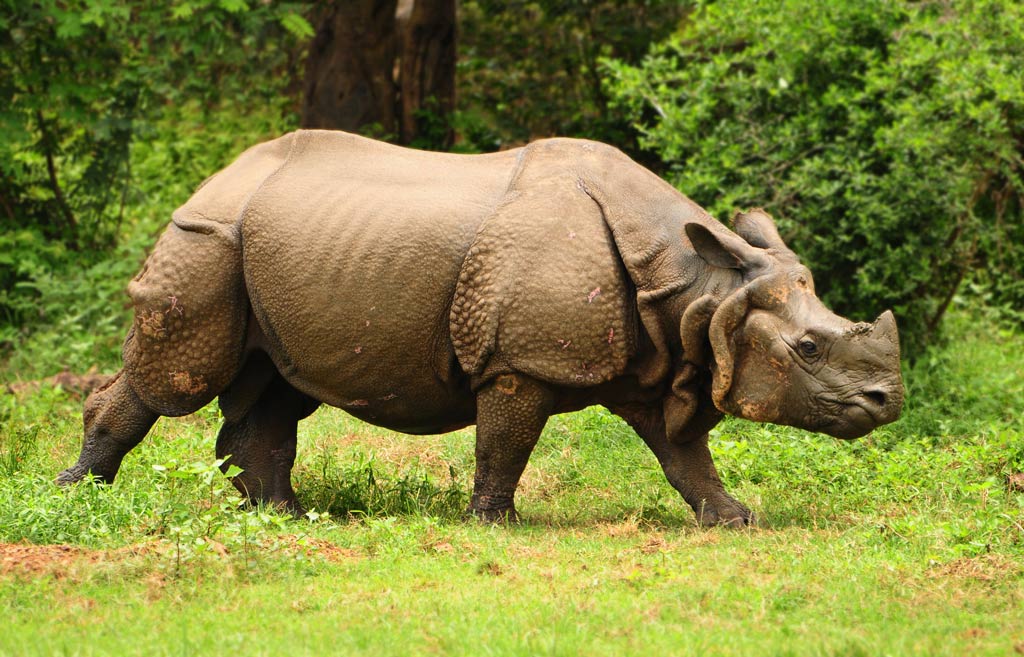Journey to the Sundarbans: The kingdom of tigers and mangroves
Journey to the Sundarbans: the kingdom of tigers and mangroves: to the south of Bangladesh and east of India, an extraordinary natural labyrinth stretches over 10,000 square kilometers: the Sundarbans. This vast delta, where the Ganges, Brahmaputra and Meghna rivers meet the Bay of Bengal, is home to the world’s largest mangrove ecosystem. But beyond this impressive forest of trees rooted in saline waters, the Sundarbans are most famous for their most emblematic and elusive inhabitant: the Bengal tiger.
A Unique Ecosystem: The Magic of Mangroves
The Sundarbans are much more than just a stretch of tropical rainforest. These mangroves play a vital role for the environment, acting as a natural barrier against cyclones and floods, while preserving biodiversity. Mangrove trees, with their distinctive aerial roots, stand proudly above the muddy water, forming a mysterious and enchanting landscape. They are able to survive in an environment where few other plants could flourish, thanks to their ability to filter salt water and adapt to extreme tidal conditions.

This complex ecosystem supports an incredible diversity of life. In addition to the famous tigers, the Sundarbans are home to hundreds of species of birds, reptiles, fish and other mammals. Irrawaddy dolphins, marine crocodiles and reticulated pythons are just some of the many animals that thrive in these intertwined waters and lands.
The Bengal Tiger: Lord of the Sundarbans
The Bengal tiger, often referred to as the “Lord of the Sundarbans”, is the region’s largest predator. This majestic feline, known for its impressive size and brute strength, is an endangered species, and the Sundarbans represent one of its last refuges. It is estimated that around 400 Bengal tigers live in this region, making it one of the largest remaining populations in the world.
However, the tigers of the Sundarbans are different from those found in other regions. Adapted to their unique environment, they are excellent swimmers and spend much of their time navigating between mangrove islands in search of prey. They are also smaller than their counterparts in other regions, an adaptation probably linked to the constraints of the island environment and dense vegetation.
Interactions between tigers and Sundarbans inhabitants have long been tinged with mystery and mutual respect. Sundarbans tigers are renowned for their aggressiveness, and attacks on humans are unfortunately frequent, adding to the aura of sacred terror that surrounds these felines. In this region, the tiger is both feared and revered, and many local legends tell tales of survival, courage and spiritual interaction with these powerful creatures.
The Challenges of Conservation: A Fragile Balance
Although the Sundarbans is a UNESCO World Heritage Site, this ecosystem is threatened by a multitude of factors. Climate change, with rising sea levels and increasing salinity, is a major threat. Increasingly frequent and violent tropical storms are destroying habitats and eroding mangrove islands. Illegal deforestation, overexploitation of natural resources, and the expansion of human activities such as agriculture and intensive fishing are also disrupting this delicate balance.
The survival of the Bengal tiger is closely linked to that of the Sundarbans. As their habitat shrinks, tigers often find themselves in conflict with local populations, resulting in losses on both sides. Communities living in and around the Sundarbans depend on the region’s natural resources for their livelihoods, but they are also the first victims of tiger attacks and natural disasters. Striking a balance between biodiversity conservation and the needs of human communities is one of the region’s most pressing challenges.
Conservation efforts: Protecting world heritage
Efforts to protect the Sundarbans and their rich biodiversity are many and varied. The governments of Bangladesh and
India
as well as various international and local organizations, have set up conservation programs aimed at protecting this vital ecosystem. These initiatives include the creation of tiger reserves, the implementation of strict anti-poaching policies, and reforestation projects to restore degraded areas.
A crucial aspect of conservation in the Sundarbans is the involvement of local communities. Educational programs and awareness-raising initiatives have been set up to inform local people about the importance of conservation and encourage them to take an active part in protecting their environment. For example, sustainable development projects, such as the promotion of ecotourism and the establishment of alternative livelihoods, are underway to reduce local dependence on the Sundarbans’ natural resources.
Innovative technologies are also being used to monitor and protect the tigers. Researchers use GPS collars to track the tigers’ movements and better understand their habits, helping to minimize conflicts between tigers and humans. Enhanced anti-poaching patrols, vaccination campaigns for domestic animals to prevent disease transmission, and initiatives to reduce illegal deforestation are also part of the strategies put in place to protect the Sundarbans.
The role of ecotourism: A window on nature
Ecotourism has emerged as a powerful tool for conservation in the Sundarbans. This form of sustainable tourism not only raises awareness of the beauty and importance of this unique ecosystem, but also generates income that can be reinvested in conservation and local development projects.
Sailing through the winding channels of the Sundarbans in small boats, surrounded by birdsong and rustling mangrove leaves, is an unforgettable experience. See this Wikipedia article on
the Sundarbans
to find out more. For visitors, it’s a rare opportunity to see iconic wildlife up close, while helping to preserve it. However, for ecotourism to remain beneficial, it must be managed to minimize its impact on the Sundarbans’ fragile environment. This includes strictly regulating visitor numbers, raising awareness of waste management, and training local guides to provide a nature-friendly educational experience.
An Uncertain Future: Saving the Sundarbans
The future of the Sundarbans is uncertain. The fight to protect this natural jewel is far from over, and time is running out. Climate change continues to threaten this delicate ecosystem, and without increased conservation efforts, the Bengal tiger and many other species risk disappearing from this region forever.
But there is hope. Thanks to the joint efforts of governments, non-governmental organizations, local communities and individuals around the world, progress is being made. The world is beginning to recognize the importance of the Sundarbans not only for species conservation, but also for combating global climate change.
Every step towards protecting the Sundarbans is a step towards preserving an irreplaceable global natural heritage. As we venture into this mystical forest, we must never forget that its survival is inextricably linked to our own. The kingdom of the tiger and the mangrove teaches us the interdependence of all life on Earth, and it’s up to us to ensure that this sanctuary remains a haven for wildlife for generations to come.





